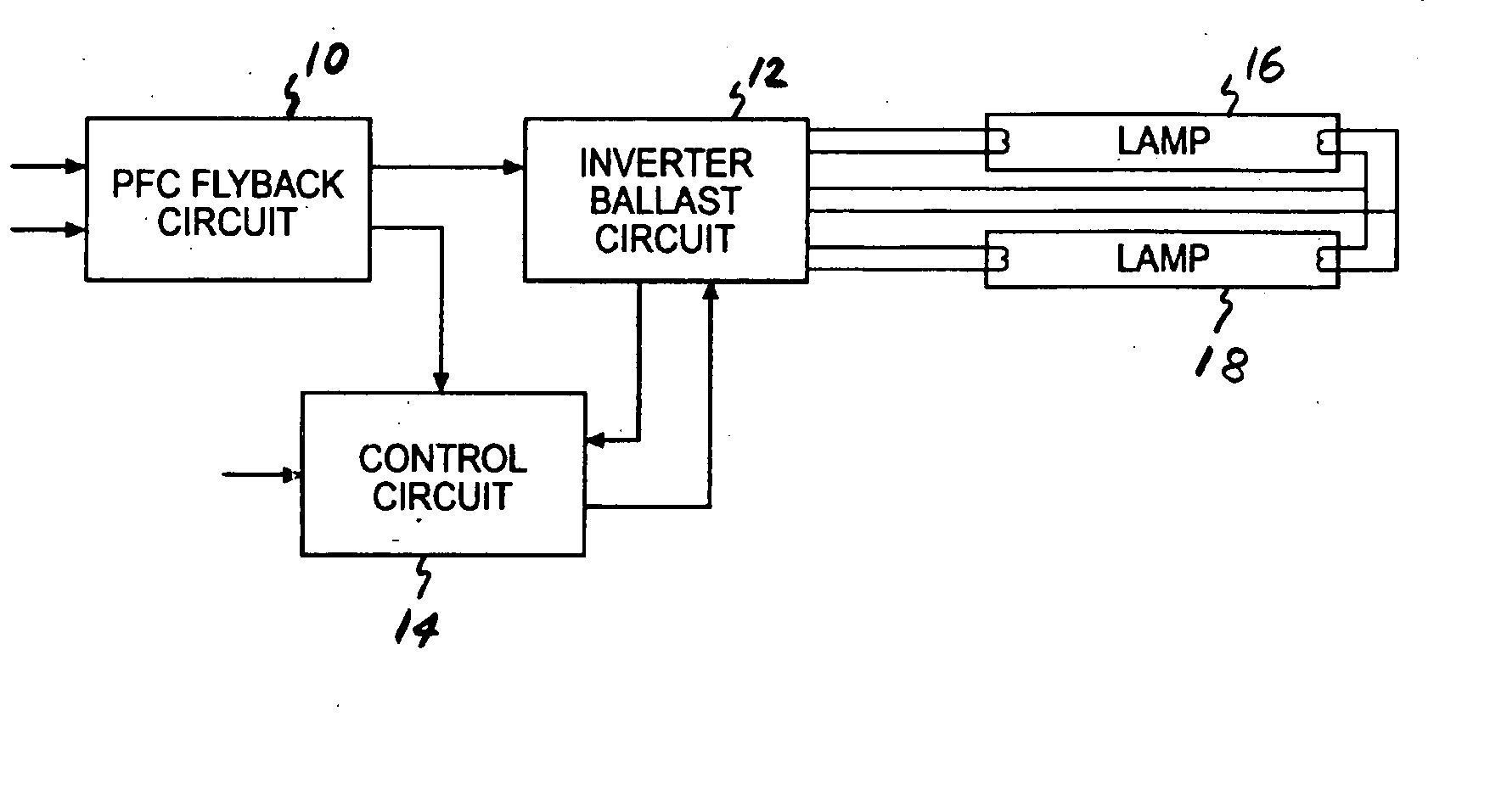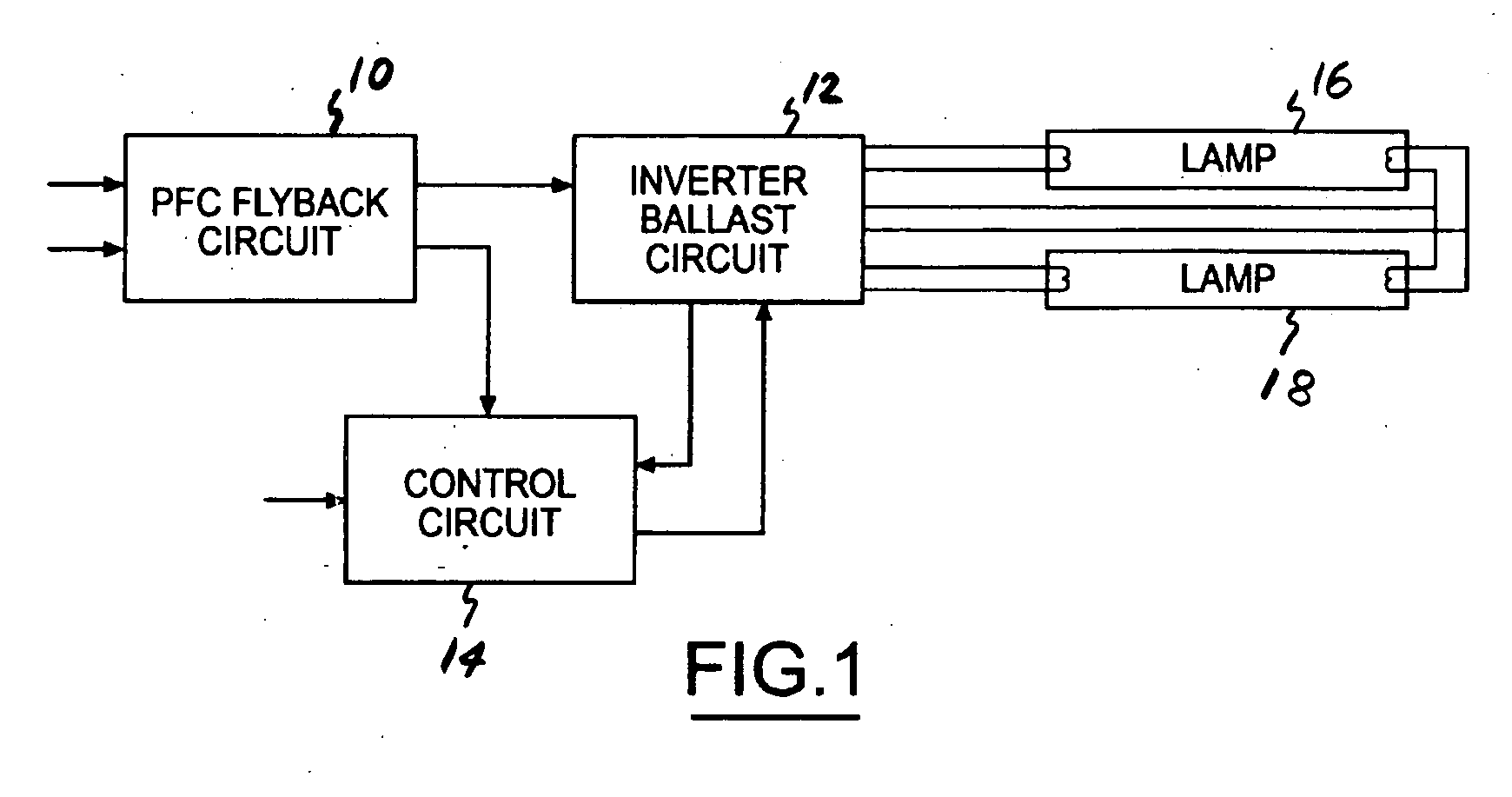Fluorescent lamp electronic ballast
a technology of electronic ballast and fluorescent lamp, which is applied in the direction of electric variable regulation, process and machine control, instruments, etc., can solve the problems of inability to operate with a varying frequency, inability of conventional ballasts that use a hold-up capacitor or passive power factor correction (pfc) l-c filter on the input, and inability to control the output frequency of generated waveforms. , to achieve the effect of low in-rush current, wide frequency range operation
- Summary
- Abstract
- Description
- Claims
- Application Information
AI Technical Summary
Benefits of technology
Problems solved by technology
Method used
Image
Examples
Embodiment Construction
[0020]FIG. 1 illustrates a fluorescent lamp electronic ballast including a power factor correction (PFC) flyback circuit 10, inverter ballast circuit 12, and control circuit 14. PFC flyback circuit 10 is composed of a rectifier receiving an AC input signal with the rectifier being connected to a DC to DC flyback converter. Inverter ballast circuit 12 receives the DC output from PFC flyback circuit 10 and converts the DC output to an AC signal for operating one or more fluorescent lamps 16, 18. Control circuit 14 includes arc detect and dim control circuitry.
[0021]FIG. 2 illustrates the ballast components in greater detail. Referring to PFC flyback circuit 10, inputs J1-1 and J1-2 receive an AC voltage such as that generated by a wild frequency AC generator. EMI filtering is performed by inductors L1 and capacitors C1, C2, C7. Diode bridge D1 rectifies the input signal. One aspect that serves to broaden the range of accommodated AC input frequencies received at the rectifier is that...
PUM
 Login to View More
Login to View More Abstract
Description
Claims
Application Information
 Login to View More
Login to View More - R&D
- Intellectual Property
- Life Sciences
- Materials
- Tech Scout
- Unparalleled Data Quality
- Higher Quality Content
- 60% Fewer Hallucinations
Browse by: Latest US Patents, China's latest patents, Technical Efficacy Thesaurus, Application Domain, Technology Topic, Popular Technical Reports.
© 2025 PatSnap. All rights reserved.Legal|Privacy policy|Modern Slavery Act Transparency Statement|Sitemap|About US| Contact US: help@patsnap.com



